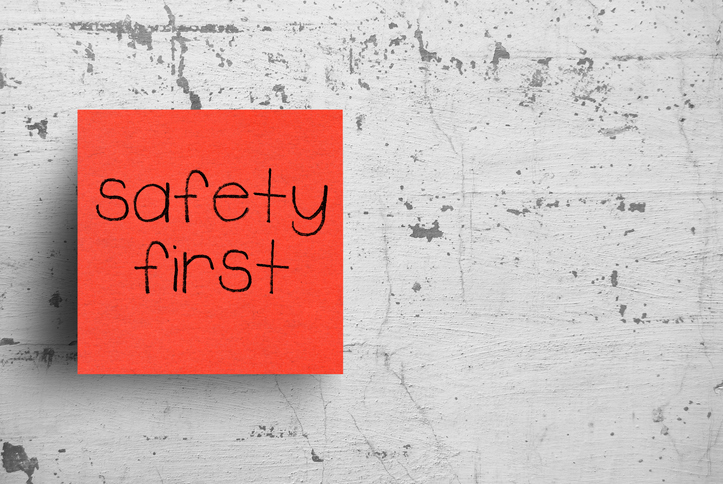Safety Governance – Let’s Get It Right!
Safety Governance – Let’s Get It Right!

Mike Plottel – GoCrisis Senior Associate
Clarity on safety governance is always important to an organization and it has become even more so as companies regroup following the Covid-19 pandemic. During the pandemic many organizations undertook massive realignment of resources and priorities in pursuit of survival and profitability, so it is important to ensure that safety accountabilities and responsibilities remain appropriately placed and well defined within the corporate structure.
To ensure an effective safety governance model, safety accountabilities and responsibilities must be well understood throughout the organization. Under a typical Safety Management System (SMS) the Accountable Executive (usually the CEO) is accountable to their Board of Directors and to regulatory authorities for safety performance. Each leader reporting to the Accountable Executive is responsible for safety performance within their department or section, and the Head of Safety (or Safety Manager, Director of Safety, VP Safety, etc.) is responsible to establish and maintain an effective SMS.
This governance structure is relatively straightforward for smaller organizations where the CEO has a direct relationship with, and good visibility into, each segment of their business. Ensuring appropriate safety governance becomes more difficult in larger organizations with multiple business units, each of which may have its own CEO and regulatory oversight. In these complex organizations, each business unit may have its own Accountable Executive for regulatory purposes, while the group CEO retains accountability to their Board of Directors.
Some complex organizations have decided to consolidate business units’ safety teams and processes at the group level. This structure provides cost savings, ensures consistency across business units, eliminates redundancies and enables easier safety performance management. If organizational needs or regulations do not require each business unit to appoint an Accountable Executive and Head of Safety, the consolidated group safety team can achieve these goals so long as it is appropriately resourced and maintains a positive working relationship with each business unit. In this scenario, safety governance can be maintained at the group level.
Should Safety Be Your Organization’s Top Priority?
Safety is often proclaimed as an organization’s top priority because, without customer, employee and shareholder confidence in safe operations, all other business functions become less important or even irrelevant. But setting safety as the organization’s top priority is not enough to effectively protect people and assets and to ensure the long-term viability of the organization.
One weakness of this model is that priorities change with time and circumstances. We certainly saw this happen during the Covid-19 pandemic when many organizations raised basic survival to the top of their priority lists. By simply espousing safety as its top priority the organization cannot embed a burning desire for safety into its culture and each member’s psyche.
To truly entrench safety in everything we do, the organization must embrace safety as a core value which is reflected in all its activities from onboarding of employees to process development, change management, performance measurement and even its management systems.
When every member of the organization takes responsibility for individual and collective safety, and the organization encourages this behaviour, safety becomes a core value as well as a top priority. Only then can customers, employees and shareholders be truly confident that everything possible is being done to ensure their long-term individual, collective and corporate wellbeing.
In cases where a group safety team is established but each business unit retains its own Accountable Executive and Head of Safety, care must be taken to ensure that only transactional activities are centred in the group safety team and that appropriate safety responsibilities, accountabilities and resources remain at the business unit level. Some examples of transactional safety activities include performance of audits and investigations, document management and safety data analysis.
A complex corporate structure of this nature might exist in a large airline group with multiple business units, such as international, domestic, regional and cargo operations, each managing its own aircraft under a separate Air Operator Certificate. Each business unit would be required to appoint its own regulated post-holders, including an Accountable Executive and a Head of Safety. In this case, safety governance becomes more complex and care must be taken to ensure the governance model meets organizational and regulatory requirements. The model must recognize that each business unit CEO is accountable to the regulator and to the group CEO for safety performance and each Head of Safety is responsible to the regulator and their business unit’s CEO to carry out their mandated duties.
If a complex organization decides to establish a group safety team, it is critical to embed appropriate structures and procedures that recognize the desired (or regulated) safety governance model. These structures and procedures must be reflected in safety responsibilities such as ownership of group-wide processes and procedures, performance reporting and compliance monitoring. Significant collaboration is required between all stakeholders to establish and maintain effective group-wide safety standards, processes and procedures. In rare cases where group-wide procedures do not meet the needs of all business units, variances will be required and a process to record, manage and review these variances must be established.
A safety governance model must be appropriate to the size, nature and complexity of the organization. For the model to be effective, safety accountabilities and responsibilities must be appropriately assigned and understood by every member of the organization. A well-designed safety governance model that is integrated into roles and responsibilities throughout the organization will support an effective Safety Management System, regulatory compliance and a healthy safety culture.
© 2025 GoCrisis. All rights reserved | Privacy Policy | Sitemap | Contact Us